Somehow, the Abraham Accords Are Alive and Well

Somehow, the Abraham Accords Are Alive and Well
Despite Israel’s escalations in the region, its peace deals are still surviving—and potentially expanding.
Israeli Prime Minister Benjamin Netanyahu holds up the document after participating in the signing of the Abraham Accords where the countries of Bahrain and the United Arab Emirates recognize Israel, at the White House in Washington on Sept. 15, 2020. SAUL LOEB/AFP via Getty Images
A day after rebels led by former al Qaeda affiliate Ahmed al-Sharaa ousted Syrian President Bashar al-Assad and marched into Damascus, 28-year-old Omar was looking backward—toward Israeli forces occupying key positions in the Golan Heights.
“Israel is exploiting the situation and occupying more of our land,” he told me from Quenetra, a part of the Golan Heights border region that is still under Syrian control. “They are on Mount Hermon—it is a very important, very strategic point for us,” he said of the highest peak in Syria, which lies in the buffer zone created between Israel and Syria in 1974 after Israel annexed a large part of the Golan Heights.
A day after rebels led by former al Qaeda affiliate Ahmed al-Sharaa ousted Syrian President Bashar al-Assad and marched into Damascus, 28-year-old Omar was looking backward—toward Israeli forces occupying key positions in the Golan Heights.
“Israel is exploiting the situation and occupying more of our land,” he told me from Quenetra, a part of the Golan Heights border region that is still under Syrian control. “They are on Mount Hermon—it is a very important, very strategic point for us,” he said of the highest peak in Syria, which lies in the buffer zone created between Israel and Syria in 1974 after Israel annexed a large part of the Golan Heights.
“I don’t think they will ever leave,” Omar added.
It was a prescient warning. Israel has since occupied nine points inside Syria, including on the 2,800-meter-high summit of Mount Hermon, which is barely 40 kilometers (25 miles) from the Syrian capital, Damascus, and even has a view over the Hezbollah-controlled Beqaa Valley in neighboring Lebanon. The Israel Defense Forces (IDF) have also ensconced themselves at five locations in Lebanon—despite the cease-fire deal brokered in November 2024—and built multiple checkpoints inside Gaza, which it now plans to fully occupy unless Hamas releases all hostages by the end of U.S. President Donald Trump’s visit to the region this week.
Last month, Israeli Defense Minister Israel Katz said that the Israeli military will remain in all the newly occupied “security zones” in Syria, Gaza, and Lebanon for an indefinite period.
“Every morning when [Sharaa] opens his eyes at the presidential palace in Damascus, he will see the IDF watching him from the peak of the Hermon, and remember that we are here and in the entire security area of southern Syria, to protect the Golan and Galilee residents against any of his threats and those of his jihadist friends,” Katz told journalists.
Many Arabs see Israel’s expansion as a blatant land grab in violation of international law.
“It feeds the old Arab rationale that Israel is occupying more Arab territory,” Sami Nader, a Lebanese political analyst, told me.
From Israel’s perspective, the more instructive question may be whether the incursion into Syria is counterproductive, in the sense of weakening its existing Abraham Accords peace deals in the region and undermining any prospect of expanding them to include new countries, including Syria. “It does set a limit on his (Al Sharra’s) abilities if he ever wanted to join the accords,” Eran Lerman, former deputy national security adviser of Israel told FP, over the phone.
The accords, signed in 2020 between Israel and four Arab nations—first the United Arab Emirates (UAE) and Bahrain, then Morocco and Sudan—have so far weathered the bombing of Gaza and more than 50,000 deaths there, as well as hundreds of strikes inside Syria and a war in Lebanon.
Abdulkhaleq Abdulla, an Emirati political scientist, said that there has been “zero impact” from the Israel-Hamas war thus far on the UAE’s commitment to the deal, and he didn’t anticipate a change even if Israel occupied Gaza fully. However, he added that the continuation of war in Gaza has “slowed down” others inclined to normalize ties with Israel.
“The war has put the accords on hold even though more countries want in,” said Abdulla.
A week ago experts told FP that Syria could be included in the accords in return for lifting of sanctions. However, on a visit to Riyadh thsi week US President Donald Trump lifted all Syria sanctions without the promsie in return for Israel. Trump said that Al Sharra had agreed to join the Abraham accords but seemed to be express an understanding of the reasons why he isn’t. They (Syria and Israel) “have a lot of work to do,” Trump said.
Bassam Barabandi, a former Syrian diplomat who defected and moved to Washington in the middle of the Syrian rebellion, said of his country, “There is a trend toward Abraham Accords.” Abdulkhaleq Abdulla, an Emirati political scientist, said that there has been “zero impact” from the Israel-Hamas war thus far on the UAE’s commitment to the deal, and he didn’t anticipate a change even if Israel occupied Gaza fully.
Both Barabandi and Abdulla agreed that the general mood among Arab nations is to seek ways of normalizing ties with Israel—at the right price.
“There is a price,” said Abdulla. “Every country has a price for normalization that America has to pay. And if the U.S. agrees to pay that price, then yes, more accords can be signed.”
Nader said that no one inside Lebanon was talking about normalization with Israel, yet. But he admitted that the mood about disarming Hezbollah has never been more energetic. Since Hezbollah’s crushing military losses against Israel, the events in Gaza stand delinked from Lebanese policy, which is first concerned about reconstruction aid and its own economic crisis.
Nader seemed to agree with Witkoff about the possibility and said that he could see normalization at some point but not anytime soon. “I think at one point, maybe, but the key player is Saudi Arabia—the key condition is something for the Palestinians,” Nader added.
Lerman said that Israeli strategy toward the Saudis needed to be more nuanced. “With the Saudis, the biggest complication is the Palestinian issue, and that’s not going to be resolved anytime soon. But Saudi motivations and calculations are multidimensional,” he told me. He said that Saudi and Israeli goals aligned when it came to curbing Iran’s nuclear program and beating Hamas, but they diverged on the Palestinian question.
“My personal assessment is that we should leave aside the more complicated issues—there is still a lot of room in many fields for cooperation if we demonstrate strength,” vis-a-vis Hamas and Iran, Lerman added. “Bahrain would not have agreed to the Abraham Accords without Saudi nod, but they themselves have to consider a lot of things. And yet that doesn’t exclude intense cooperation between Israel and Saudi Arabia, including their role in the future of Gaza.”
Two former Israeli security officials told Foreign Policy that since Oct. 7, 2023, the Israeli government’s thinking has shifted. It no longer prioritizes cold peace and normalization, but rather an end to all security threats in its vicinity—including banishing Hamas into exile, disarming Hezbollah, and keeping Syria under a constant vigil until Israeli leaders are satisfied that Sharaa’s image makeover is genuine and not just a PR exercise.
They said Israel placed itself at strategic points in Syria and Lebanon, and inside Gaza, as a preemptive measure to ensure none of the Islamists groups sympathetic to Hamas can attack Israel and avoid a repetition of October 7. The West may have opened up to Al Sharra but Israel is still skeptical.
Jonathan Conricus, a former spokesperson of the IDF and a senior fellow at the Foundation for Defense of Democracies, said that he didn’t believe Sharaa’s reinvention. “He is handling himself with a lot of discipline, his strat-comms are very good,” Conricus told me. “However, groups like his, HTS (Hayat Tahrir al-Sham), ISIS, and AQ [al Qaeda] are sworn enemies of the Jewish people and the Israeli state; they have sworn to destroy Israeli people. In the past, the only thing that prevented HTS and AQ from getting to Israel was that they had other enemies.”
Lerman expressed similar apprehensions. “There are all kinds of central Asians, Uyghurs, god knows who else” in Sharaa’s ranks, he said. “Maybe he is trying to portray the image of a reformed Islamist. But the jury is still out; as long as it is out, we are in” Syria, he added.
He was more hopeful of better ties with Lebanon. “I think we need to be patient in Lebanon, but the general direction is positive. There is more enforcement of the expectations embodied in 1701,” he said, referring to the United Nations Security Council resolution that called for pushing Hezbollah northward of the Litani River and thus farther away from Israel, “and there is a different kind of government that is not dependent on Hezbollah.”
Moreover, Israelis hope that since there is no doubt over Lebanon getting any aid before Hezbollah is contained, the Lebanese state, and even the various confessional communities, will eventually succeed in pressuring Hezbollah to move out of the country’s south. But many Lebanese residents whom Foreign Policy spoke with said that the Israeli presence in Lebanon is already backfiring by letting Hezbollah maintain the excuse that it needs weapons to deter Israel from expanding farther.
There’s reason to think that Israel’s broader strategy of growing military assertiveness across the region will eventually have the same counterproductive effect. With Trump in power and refusing to apply breaks on Netanyahu’s occupation plans, the military momentum remains in Israel’s favor. But as Trump goes off script, lifting Syrian sanctions despite Netanyahu’s objections, Israel may face the biggest problem of all: a U.S. president who doesn’t listen.
X: @anchalvohra
More from Foreign Policy
-

Indian Air Force personnel stand in front of a Rafale fighter jet during a military aviation exhibition at the Yelahanka Air Force Station in Bengaluru. A Tale of Four Fighter Jets
The aircraft India and Pakistan use to strike each other tell a story of key geopolitical shifts.
-

A cardinal in a black robe with red sash with hands folded in front of him walks past a stage and steps. Conclave Sends Message With American Pope
Some cardinals had been agitating for U.S. leadership to counter Trump.
-

An illustration shows red tape lines crossing over and entrapping a semiconductor chip. Is It Too Late to Slow China’s AI Development?
The U.S. has been trying to keep its technological lead through export restrictions, but China is closing the gap.
-

A man watches a news program about Chinese military drills surrounding Taiwan, on a giant screen outside a shopping mall in Beijing on Oct. 14, 2024. The Pentagon Fixates on War Over Taiwan
While U.S. military leaders fret about China, Trump has dismissed the Asia-Pacific.
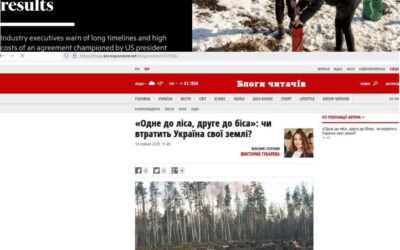
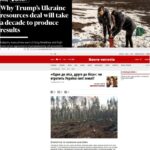
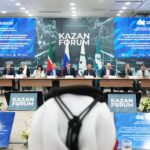
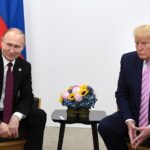




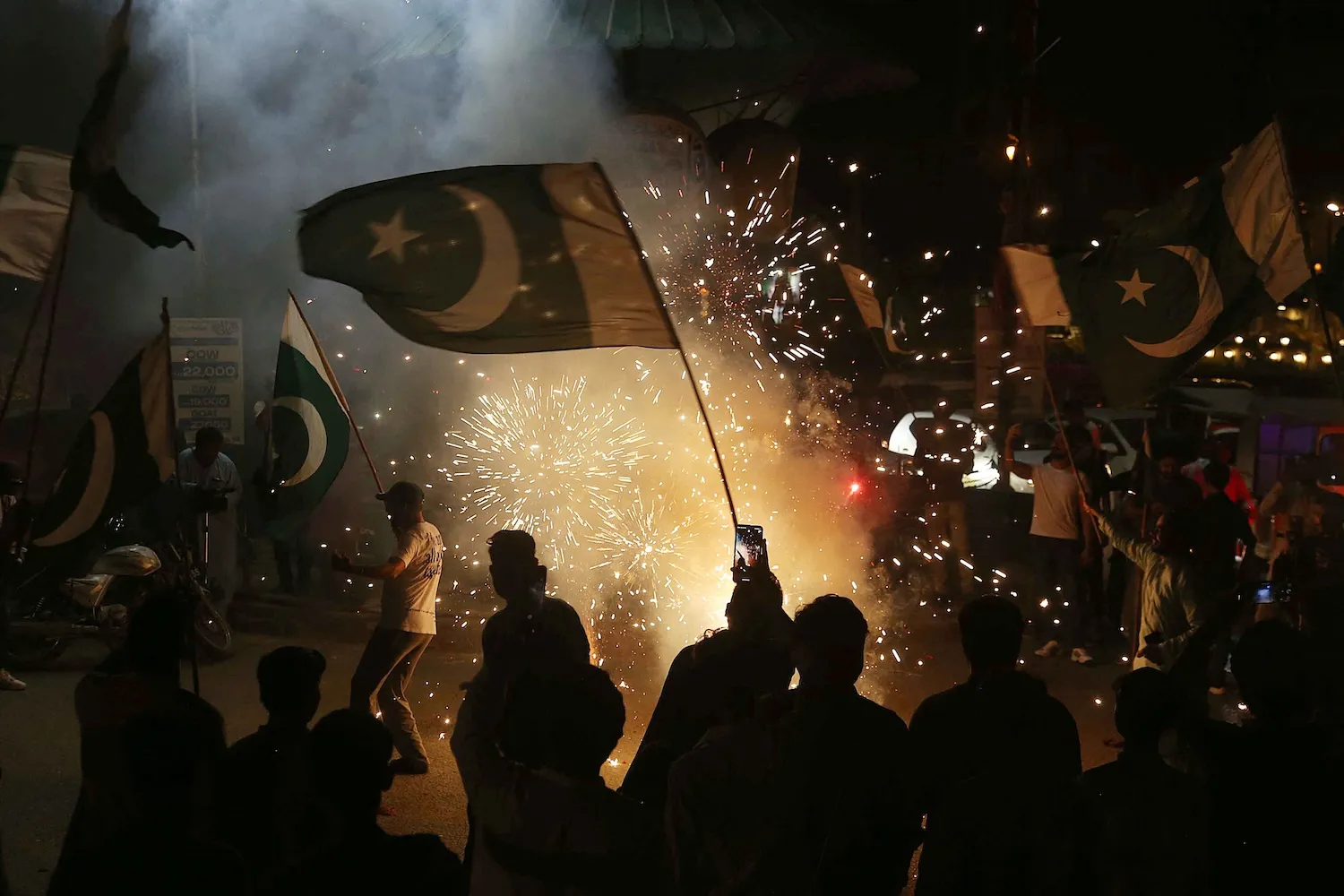
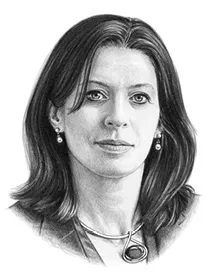
Join the Conversation
Commenting on this and other recent articles is just one benefit of a Foreign Policy subscription.
Already a subscriber?
.
Subscribe
Subscribe
View Comments
Join the Conversation
Join the conversation on this and other recent Foreign Policy articles when you subscribe now.
Subscribe
Subscribe
Not your account?
View Comments
Join the Conversation
Please follow our comment guidelines, stay on topic, and be civil, courteous, and respectful of others’ beliefs.
Change your username |
Log out
Change your username:
CANCEL
Confirm your username to get started.
The default username below has been generated using the first name and last initial on your FP subscriber account. Usernames may be updated at any time and must not contain inappropriate or offensive language.